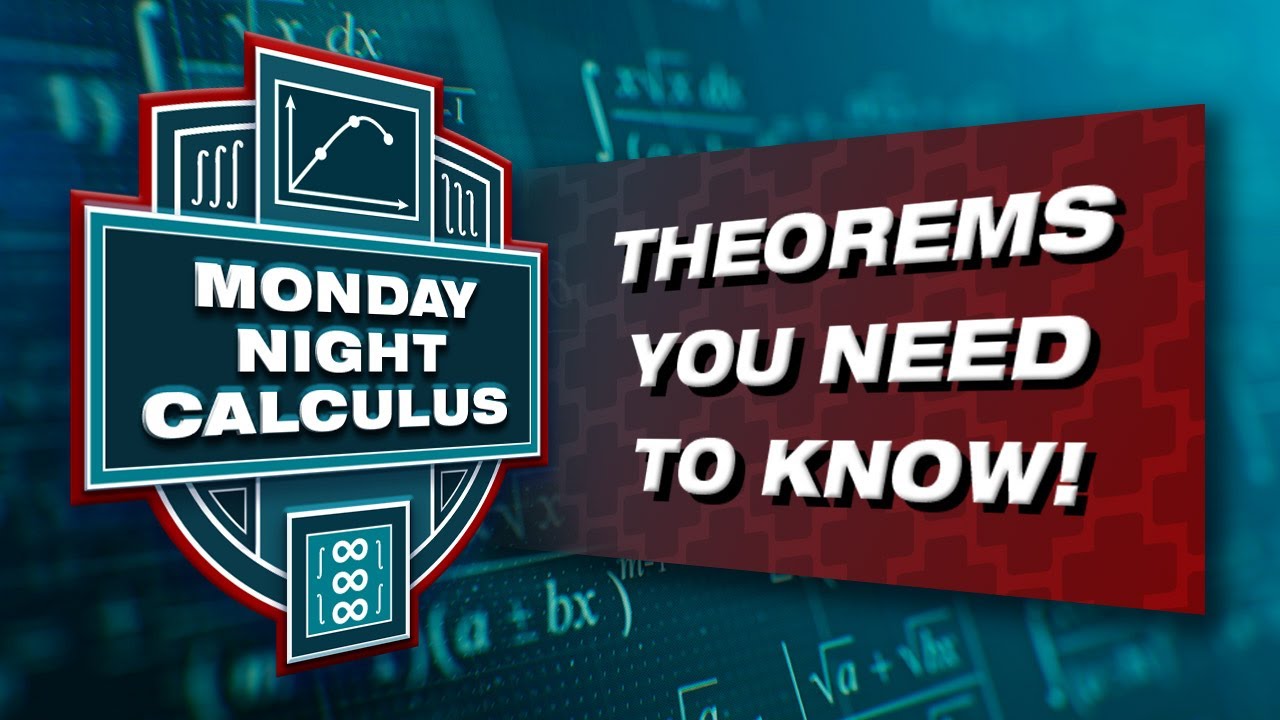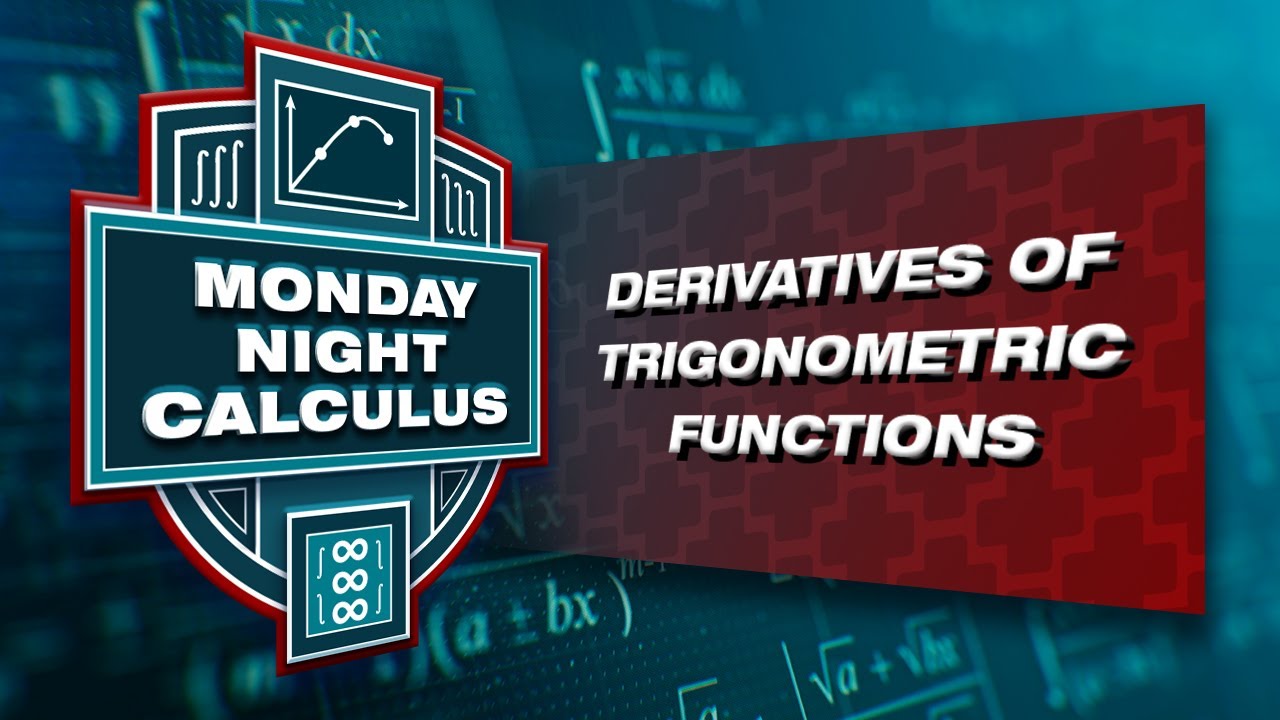Monday Night Calculus: Rectilinear motion
TLDRIn this engaging Monday Night Calculus session, Curtis Brown is joined by Steve Kokoska and Tom Dick to explore rectilinear motion problems. Steve presents a comprehensive review of particle motion, delving into terminology, problem-solving techniques, and the interpretation of calculus concepts. Tom showcases the use of TI-84 and TI-Inspire technologies to visualize motion and enhance understanding. The session also includes a discussion on the Tower of Terror ride model, highlighting the practical applications of calculus in real-world scenarios.
Takeaways
- 📘 The session is a mathematics lecture focused on rectilinear or particle motion problems.
- 👨🏫 Curtis Brown, Steve Kokoska, and Tom Dick are hosting the Monday Night Calculus session.
- 📊 Steve Kokoska presents various terminology and interpretations related to particle motion, such as position, velocity, and acceleration.
- 🤔 The session emphasizes the importance of understanding AP Calculus exam practices, including how initial positions and velocities are given.
- 📈 Tom Dick shares technology tips on using the TI-84 and TI-Inspire for graphing and solving calculus problems.
- 🚀 The Tower of Terror ride at an amusement park in Minneapolis is used as a real-world example to illustrate particle motion concepts.
- 📚 Participants are encouraged to engage by posting questions in the chat and discussing the topics covered in the session.
- 💡 The session highlights the use of parametric equations in graphing calculators to visualize particle motion.
- 📝 Curtis Brown stresses the importance of posting assignments and exercises for students to practice and engage with the material.
- 🎓 The session touches on the concept of average velocity and how it can be interpreted as the distance traveled over time.
- 🤹♂️ The hosts use interactive elements such as whiteboarding and graphing calculator demonstrations to clarify concepts.
- 🔗 Resources like the TI In Focus series are mentioned as valuable tools for both teachers and students preparing for the AP Calculus exam.
Q & A
What topic is being discussed in the transcript?
-The topic being discussed is rectilinear motion, specifically focusing on particle motion problems.
Who are the main speakers in the transcript?
-The main speakers in the transcript are Curtis Brown, Steve Kokoska, and Tom Dick.
What are the key components of rectilinear motion discussed in the transcript?
-The key components of rectilinear motion discussed include initial position, initial velocity, position at a specific time, velocity, acceleration, and the interpretation of these in mathematical terms.
How does the transcript suggest using technology in teaching calculus?
-The transcript suggests using technology to visualize the motion of a particle, graph the position function, and solve problems related to rectilinear motion, making it a valuable tool for both teachers and students.
What is the significance of the Tower of Terror example in the transcript?
-The Tower of Terror example is used to illustrate how the concepts of rectilinear motion can be applied to real-world scenarios, specifically the motion of a ride in an amusement park, making the abstract concepts more tangible and relatable.
What is the purpose of the exercises assigned in the transcript?
-The purpose of the exercises is to reinforce the understanding of rectilinear motion concepts and provide practice in applying these concepts to solve problems.
How does the transcript address the concept of average velocity?
-The transcript addresses average velocity as the total distance traveled divided by the elapsed time, and it also discusses how to find this value mathematically using integrals.
What is the significance of the 'particle' in the context of the transcript?
-In the context of the transcript, a 'particle' is a simplified model used to represent an object in motion along a straight line, allowing for the study of its position, velocity, and acceleration over time.
How does the transcript handle the concept of direction in rectilinear motion?
-The transcript handles the concept of direction by associating it with the velocity of the particle; a positive velocity indicates motion to the right, while a negative velocity indicates motion to the left.
What is the role of the fundamental theorem of calculus in the problems discussed in the transcript?
-The fundamental theorem of calculus is used to find the position of the particle at a given time, by integrating the velocity function over a specified time interval.
Outlines
📚 Introduction to Monday Night Calculus
The video begins with an introduction to the Monday Night Calculus session, hosted by Curtis Brown, who is joined by Steve Kokoska and Tom Dick. Curtis expresses excitement about the session and introduces the topics that will be covered, including rectilinear motion and technology tips for TI-84 and TI-Inspire calculators. Steve then takes the lead to discuss particle motion problems and the integration of concepts learned throughout an AP Calculus course.
📈 Interpreting Calculus Terminology and Problem Solving
Steve Kokoska continues the session by interpreting common phrases found in AP Calculus questions and translating them into mathematical terms. He discusses various concepts such as initial position, velocity, and acceleration, and how they relate to particle motion. Steve also covers how to find values of t where the particle is at rest and how to determine when a particle is moving to the right or left. The explanation includes the use of velocity and acceleration functions, and how to solve problems involving these concepts.
🚀 Applying Concepts to Real-World Motion
The session delves into applying calculus concepts to real-world scenarios, using the example of a particle moving along a horizontal line. The discussion includes finding the position of the particle at specific times, understanding when the particle changes direction, and calculating the total distance traveled. Steve emphasizes the importance of technology in solving these problems and encourages students to engage with the material by posting questions in the chat.
🤔 Solving Problems with Velocity and Acceleration
Steve Kokoska presents a detailed approach to solving problems involving velocity and acceleration. He demonstrates how to find values of t for which the speed of a particle is constant, how to write an expression for the position of a particle at a given time, and when the particle changes direction. The explanation includes the use of graphs and calculators to visualize and confirm solutions, highlighting the importance of accurate calculations in AP Calculus exams.
🎢 Case Study: Power Tower Ride Analysis
The session continues with a case study of the Power Tower ride, using a piecewise linear function to model the ride's velocity. Steve Kokoska and Curtis Brown discuss how to determine when the ride changes direction and the highest point reached by the ride. They also explore the total distance traveled by the ride, using integrals of the velocity function and emphasizing the practical application of calculus concepts in analyzing real-world motion.
🛠️ Technology Tips for Visualizing Motion
Tom Dick takes over to share technology tips for visualizing motion using TI-84 and TI-Inspire calculators. He demonstrates how to use parametric equations to visualize motion along a line and how to graph the position function simultaneously. Tom also discusses the use of different graph styles and the trace feature to better understand the motion of an object, emphasizing the educational value of visualizing calculus concepts in action.
🌟 Wrapping Up and Resources for Further Learning
The session concludes with Curtis Brown thanking everyone for attending and encouraging students to get involved in future sessions. He also promotes the TI In Focus project, a series of videos by Steve and Tom that analyze previous AP Calculus free-response questions and provide technology extensions for deeper exploration of topics. The session ends with a reminder to check out the resources available on the education.ti.com website for further learning and exploration.
Mindmap
Keywords
💡Rectilinear Motion
💡Velocity
💡Acceleration
💡Position Function
💡Integral
💡Graphing Calculator
💡TI-84 and TI-Inspire Technologies
💡Calculus
💡AP Calculus
💡Kinematics
Highlights
Introduction to Monday Night Calculus and the hosts Curtis Brown, Steve Kokoska, and Tom Dick.
Discussion on rectilinear motion and the importance of understanding particle motion problems in AP Calculus courses.
Explanation of the standard notation used in calculus for position, velocity, and acceleration functions.
Interpretation of common phrases found in AP Calculus questions related to particle motion into mathematical expressions.
Importance of initial position, velocity, and acceleration in understanding the motion of a particle.
Technological tips on using TI-84 and TI-Inspire calculators for solving calculus problems.
Demonstration of how to solve for specific times when a particle is at rest or when the velocity is zero.
Explanation of how to determine when a particle is moving to the right or left based on the velocity function.
Discussion on calculating the average velocity of a particle over a given interval.
Insight into finding the instantaneous velocity and acceleration of a particle at a specific time.
Methodology for determining when a particle's speed is increasing or decreasing based on the signs of acceleration and velocity.
Illustration of how to calculate the total distance traveled by a particle over a time interval.
Explanation of the difference between total distance traveled and displacement of a particle.
Demonstration of using technology to visualize the motion of a particle and its position function graph.
Application of the fundamental theorem of calculus to find the position of a particle at a second time given its position at an initial time.
Discussion on finding the times when a particle changes direction and the use of a table of values method for extreme value problems.
Conclusion and wrap-up of the session, emphasizing the value of using technology in visualizing and understanding calculus concepts.
Transcripts
Browse More Related Video

Monday Night Calculus: Substitution

Fall 2023 MNC: Trick or treat - Some important theorems in differential calculus

Monday Night Calculus: Volume

Traveling in Flatland: Polar and Parametric Motion in the Plane

Fall 2023 MNC: Slice thin and add - Riemann sums and definite integrals

Monday Night Calculus: Derivatives of Trigonometric Functions
5.0 / 5 (0 votes)
Thanks for rating: